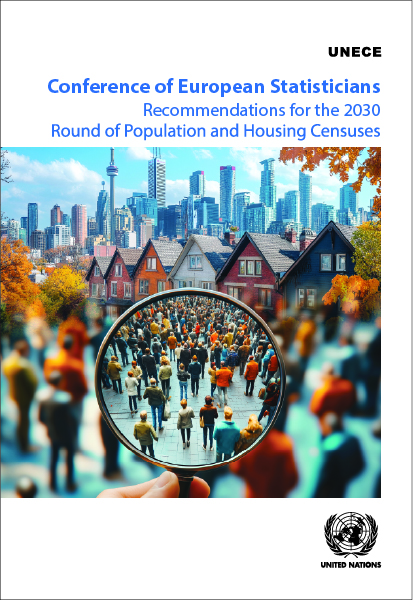Chapter 10 Census costs and benefits

693.
693. With wide variation in both census design and financial practices among countries, no single approach to census budgeting and cost control can be recommended, but some key principles are common to all situations.

694.
694. First, an effective budget should be based on a list of all the key components of the census operation. Irrespective of the census design, these components will generally correspond to the eight phases of the Generic Statistical Business Process Model (GSBPM),67 which may therefore serve as a helpful basis both for designing the budget and for monitoring actual costs. The relative weight of each of these phases among the total census budget will vary significantly according to the census design, and this may provide useful information to guide decisions about future censuses.

695.
695. Second, if a country’s census legislation requires the census plan and associated budget to be approved by Government, it is essential to obtain such approval and to secure the necessary resources from the national budget well in advance of the start of census operations. Delays in obtaining legal approval and budget allocations can have very significant adverse effects on census outcomes, including increased costs, reduced public trust and even postponement of the census, so it is critical that adequate lead times are incorporated into census planning from the outset. Such lead times vary by country, so no specific recommended time frame can be given. Planning for obtaining approvals should include a consideration of the possible impacts of changes in government, the possibility that a census plan or draft budget may be rejected, and the time needed to prepare revised versions. As detailed in Chapter 11, unforeseen circumstances can lead to government shutdowns or other legislative delays (for example as was experienced in many countries in connection with the Covid-19 pandemic). To the greatest extent possible, lead times for obtaining budgetary approval should include a buffer for such possible delays so that they do not prevent the timely receipt of resources for the census.

696.
696. Third, actual costs should be recorded carefully, with costs allocated to the corresponding part of the planned budget. Such recording of census costs is important not only for monitoring adherence to the budget of the current census, but also for providing information to guide development of both the design of, and the budget for, future censuses; albeit with the understanding that actual costs will change with trends in prices, wages, population structure and census methodology. Accurate recording of costs is facilitated by robust financial management and accounting systems, which have the associated advantages of ensuring rapid payments to staff and suppliers and enabling efficient auditing.

697.
697. The complexity of carrying out a census means that the operations and their associated costs will rarely align exactly with plans. Changes in the prices of major components of census costs should be monitored on a regular basis, adjusting the census budget or modifying the census plans accordingly. The development of the census budget is usually an incremental process in which rough initial estimates are replaced gradually by more detailed and precise statements of resource requirements. Sufficient contingency should be built into the system to accommodate unexpected additional costs and increases in planned costs (see Chapter 11). As far as possible the approach should be discussed and agreed with funding agencies in advance, and any risks associated with changes of costs assessed fully.

698.
698. Where some or all of the census data are obtained from administrative sources, or where administrative sources are used in support of other census functions, the task of estimating and evaluating census costs may be complicated. Depending on both the funding models for these sources and the goals of the cost-accounting operations, it may be appropriate to record the whole or part of the cost of these sources, or to calculate just the costs of those operations required to prepare data for the census.

699.
699. Similarly, in NSOs that use or are moving towards an integrated system of population and migration statistics, it may be difficult to identify those specific costs that are attributable to the census as distinct from ongoing costs of regular population and migration statistics, or operating costs of the NSO as a whole.

700.
700. Whatever decisions are made regarding the allocation of costs, the approach taken should be made as transparent as possible.

701.
701. Given the potential for wide variation in such decisions, countries must be cautious of making international comparisons of census costs. Differences in census content, organization and operations, as well as different approaches to cost accounting, can make such comparisons difficult or misleading.

702.
702. Each component or phase of the scheme used to design the census plan and budget (whether phases of the GSBPM or other organizing framework) should be analyzed separately in terms of planned and incurred costs. This will permit each phase to be scrutinized for ways to manage and control costs.

703.
703. Costs may be optimized by harnessing the latest available technologies for collecting, storing, processing and disseminating census data, as well as for monitoring and managing census operations (see chapters on technology, dissemination and geospatial information for more on each of these areas). However, decisions to adopt new technologies should be made only after evaluating carefully the costs and benefits of possible options. In some cases, the cost-savings arising from a change in methodology such as adopting a new technological solution may only be realized after some time, which can be many years, or when applied at scale. This may be the case, for example, when a new technological solution requires initial investment in expensive hardware or software or staff training. Certain cost-saving technological solutions might introduce dependency on a particular supplier or product, and the risks entailed in this should be considered very carefully.

704.
704. Some possible avenues to mitigate these risks while benefiting from the cost-saving potential of technology include leasing rather than purchasing equipment; sharing equipment among countries; or reaching agreements with other entities, such as government agencies or educational institutions, to purchase used census equipment when no longer needed.

705.
705. Outsourcing elements of the census is another potential cost-saving option (see section 4.4).

706.
706. An important means of promoting cost awareness within the census office and thereby helping to keep costs under control is to involve administrative and supervisory staff in the task of estimating and monitoring costs locally.

707.
707. Census offices may be required, whether by law or by public demand, to demonstrate the benefits of the census. This can aid in justifying the often very expensive undertaking of a census to government and to the public, and can guide decisions about specific census products, by offering information on the benefits that they provide to be weighed against the marginal cost of their production.

708.
708. Work under the Conference of European Statisticians on assessing and understanding the value of official statistics68 has articulated the great challenges entailed in trying to enumerate the benefits of a census, especially when such assessment is intended to be quantified in monetary terms. While some countries have undertaken quantitative assessments of the benefits of their censuses, the methods used vary widely and no universal approach can be recommended.

709.
709. It is, however, recommended to undertake a systematic assessment of the uses and benefits of census data and products, whether this assessment is quantitative or qualitative in nature. Such assessment can serve many purposes: helping to communicate the value added by the current census, which can in turn foster public and governmental support for future censuses; informing decisions around census content, methodology and dissemination products; helping to gain an understanding of the actual and potential users of census data; and prioritizing among different dissemination tools and services produced by the NSO in relation to the census.

710.
710. Evaluation of the benefits of a census could include comparisons between outcomes that have been informed by census data, and those that might, hypothetically, arise in the absence of census data, where old, incomplete or non-official data sources (or no data) have to be used instead. They could also aim to identify cases in which census outputs have contributed directly to delivering or monitoring specific policy goals.

711.

712.
712. A comprehensive assessment of the benefits of a census should also keep in mind that it is not only the data and data products that may have value. The employment provided by the field operation, the economic impacts of census expenditures, the upskilling and enhanced corporate knowledge of NSO staff, and the social cohesion that may be prompted by the national mobilization for a census, are some of the many indirect benefits that could be considered.

713.
713. The approach(es) taken to assess the benefits of a census should, as with the costs, be documented clearly and transparently and made public.



